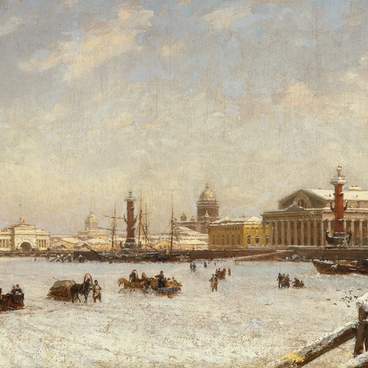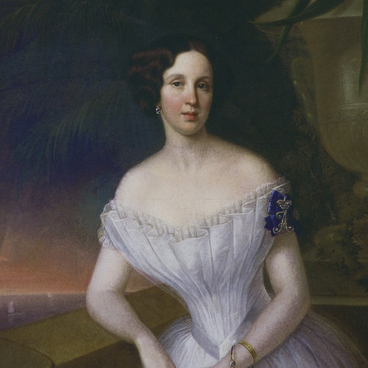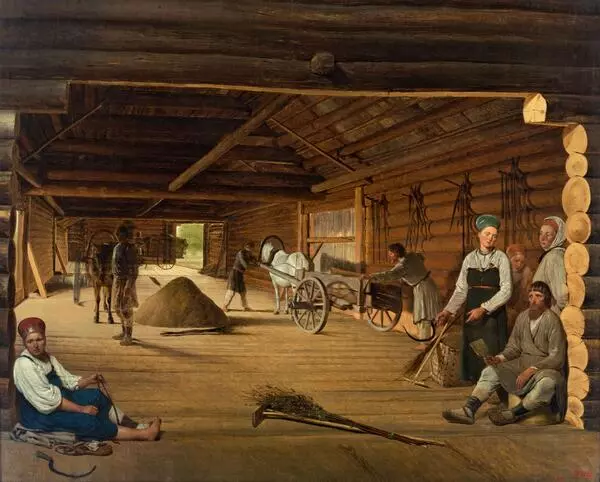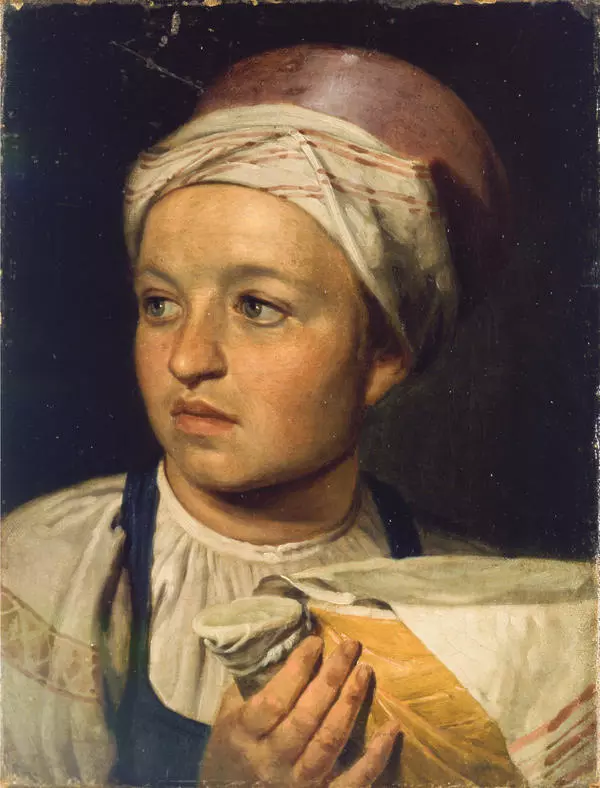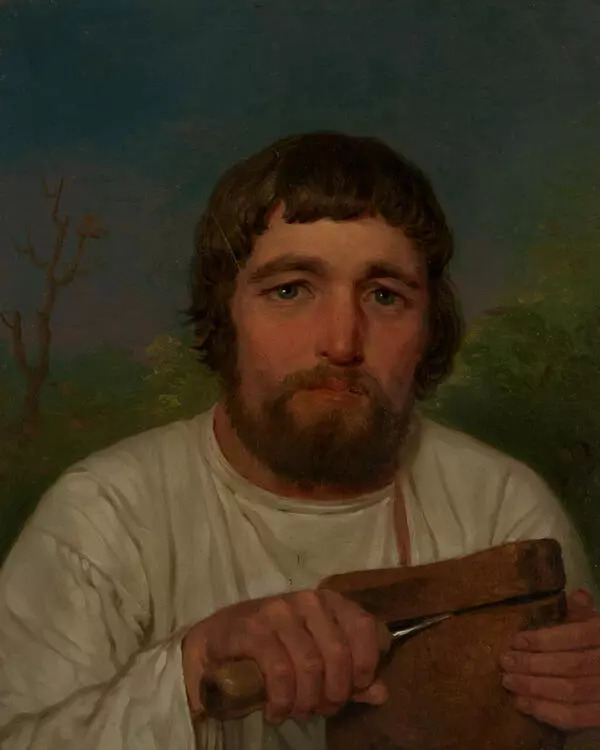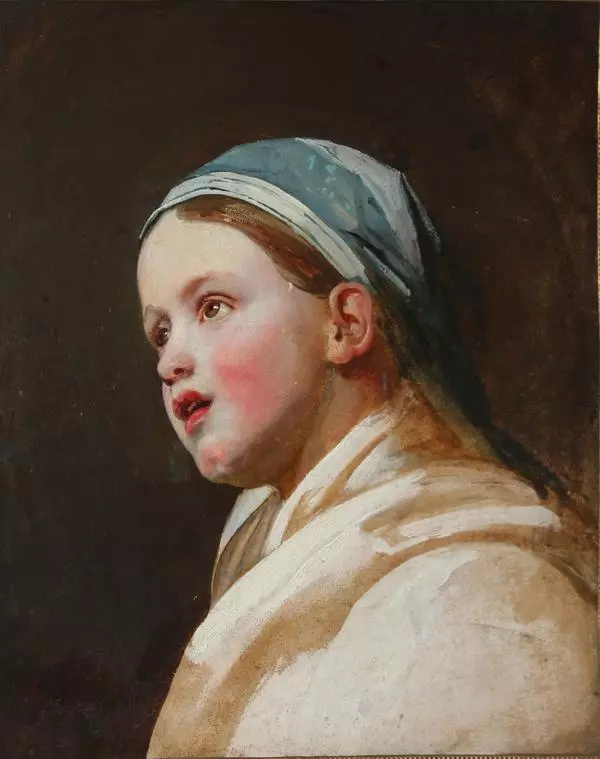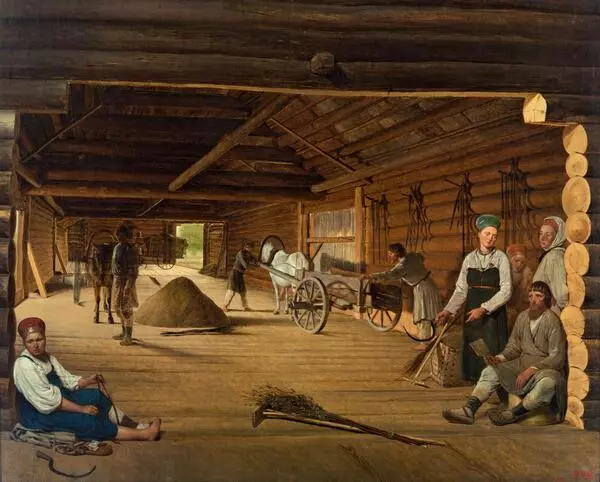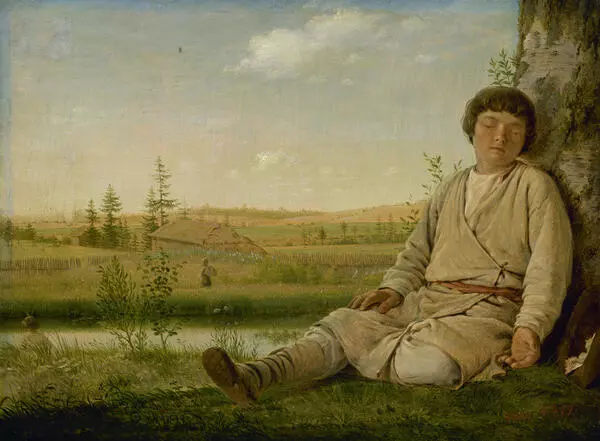The name ‘sentimentalism’ comes from the French word ‘sent’ which stands for ‘sensitive’. Sentimentalism replaced classicism, its main idea being an idealistic, peaceful human life in harmony with nature.
Sentimentalism in painting goes back to the 18th century when artists tried to depict simple, lively emotions. They painted their characters as natural, peaceful and calm. Sentimental artists contrasted the imperfection of the urban environment with the serenity of nature. Such works were supposed to arouse empathy and tenderness in the audience.
Among the wide range of plots in sentimental art are portraits of young commoners with an innocent expression on their faces, old women, poor children in beautiful but simple clothes. In most cases, the background for such portraits was the landscape. In Russia, the representatives of sentimentalism were Alexey Venetsianov, Vladimir Borovikovsky and Ivan Argunov.
Alexey Venetsianov was born in 1780 in Moscow into a family of merchants. The future artist studied painting first on his own, then under Vladimir Borovikovsky. In his youth, he painted lyrical portraits of his mother.
From 1807, Venetsianov served in St. Petersburg as a surveyor at the Forest Department. In 1811, he presented to the Academy of Arts a portrait of the inspector Kirill Golovachevsky. Venetsianov depicted him surrounded by three boys, symbolizing the ‘three noble arts’: painting, architecture, and sculpture. He was awarded the title of academician for this portrait. However, the master was best known for the paintings of peasants: ‘Reapers’, ‘Sleeping Shepherd’, ‘Zakharka’, ‘On Arable Land’ and others. The Chelyabinsk State Museum of Fine Arts houses a painting ‘Boy in a Red Shirt’ by Alexey Venetsianov.
In 1819, the artist left the service and moved with his wife and two daughters to the village of Safonkovo, the Tver governorate, where he painted portraits of peasants. In that village, Alexey Venetsianov organized his own painting school, in which more than 70 people studied. Venetsianov exhibited the paintings of his students together with his paintings at large academic exhibitions. Among the students of Venetsianov was the serf painter Grigory Soroka, whose canvases are housed in the State Russian Museum.
Sentimentalism in painting goes back to the 18th century when artists tried to depict simple, lively emotions. They painted their characters as natural, peaceful and calm. Sentimental artists contrasted the imperfection of the urban environment with the serenity of nature. Such works were supposed to arouse empathy and tenderness in the audience.
Among the wide range of plots in sentimental art are portraits of young commoners with an innocent expression on their faces, old women, poor children in beautiful but simple clothes. In most cases, the background for such portraits was the landscape. In Russia, the representatives of sentimentalism were Alexey Venetsianov, Vladimir Borovikovsky and Ivan Argunov.
Alexey Venetsianov was born in 1780 in Moscow into a family of merchants. The future artist studied painting first on his own, then under Vladimir Borovikovsky. In his youth, he painted lyrical portraits of his mother.
From 1807, Venetsianov served in St. Petersburg as a surveyor at the Forest Department. In 1811, he presented to the Academy of Arts a portrait of the inspector Kirill Golovachevsky. Venetsianov depicted him surrounded by three boys, symbolizing the ‘three noble arts’: painting, architecture, and sculpture. He was awarded the title of academician for this portrait. However, the master was best known for the paintings of peasants: ‘Reapers’, ‘Sleeping Shepherd’, ‘Zakharka’, ‘On Arable Land’ and others. The Chelyabinsk State Museum of Fine Arts houses a painting ‘Boy in a Red Shirt’ by Alexey Venetsianov.
In 1819, the artist left the service and moved with his wife and two daughters to the village of Safonkovo, the Tver governorate, where he painted portraits of peasants. In that village, Alexey Venetsianov organized his own painting school, in which more than 70 people studied. Venetsianov exhibited the paintings of his students together with his paintings at large academic exhibitions. Among the students of Venetsianov was the serf painter Grigory Soroka, whose canvases are housed in the State Russian Museum.


